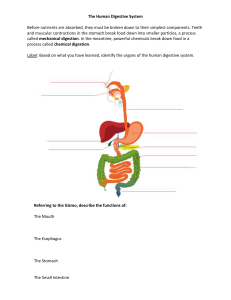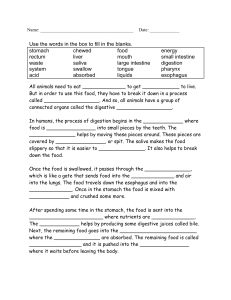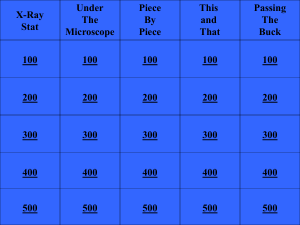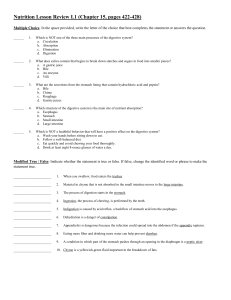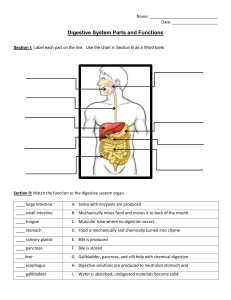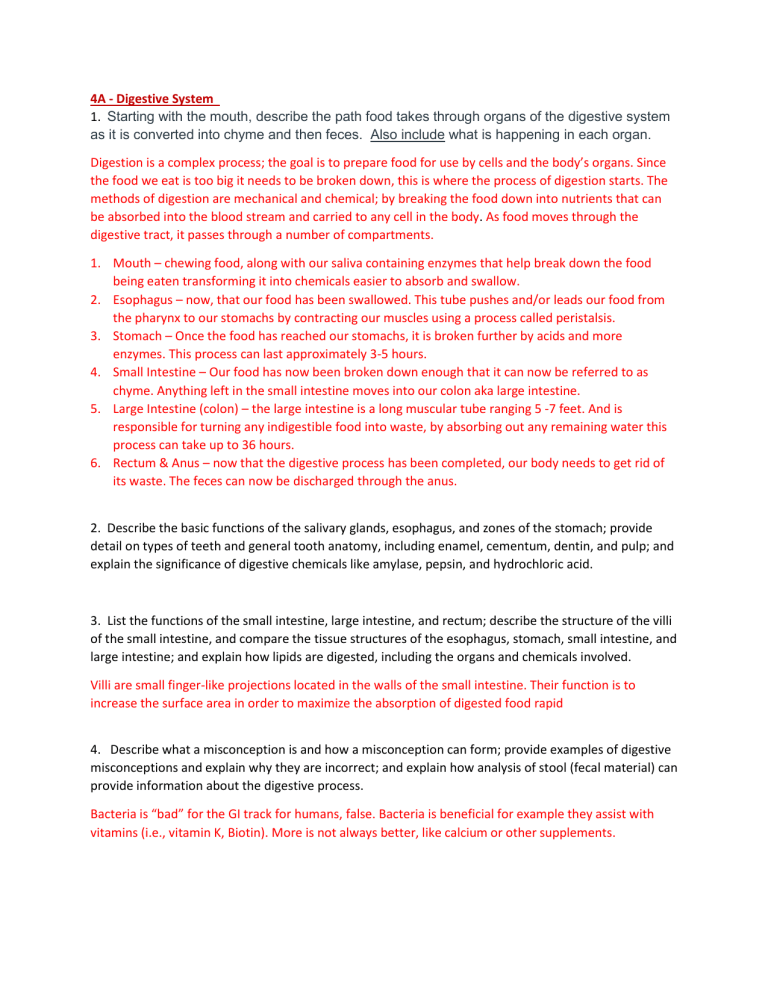
4A - Digestive System 1. Starting with the mouth, describe the path food takes through organs of the digestive system as it is converted into chyme and then feces. Also include what is happening in each organ. Digestion is a complex process; the goal is to prepare food for use by cells and the body’s organs. Since the food we eat is too big it needs to be broken down, this is where the process of digestion starts. The methods of digestion are mechanical and chemical; by breaking the food down into nutrients that can be absorbed into the blood stream and carried to any cell in the body. As food moves through the digestive tract, it passes through a number of compartments. 1. Mouth – chewing food, along with our saliva containing enzymes that help break down the food being eaten transforming it into chemicals easier to absorb and swallow. 2. Esophagus – now, that our food has been swallowed. This tube pushes and/or leads our food from the pharynx to our stomachs by contracting our muscles using a process called peristalsis. 3. Stomach – Once the food has reached our stomachs, it is broken further by acids and more enzymes. This process can last approximately 3-5 hours. 4. Small Intestine – Our food has now been broken down enough that it can now be referred to as chyme. Anything left in the small intestine moves into our colon aka large intestine. 5. Large Intestine (colon) – the large intestine is a long muscular tube ranging 5 -7 feet. And is responsible for turning any indigestible food into waste, by absorbing out any remaining water this process can take up to 36 hours. 6. Rectum & Anus – now that the digestive process has been completed, our body needs to get rid of its waste. The feces can now be discharged through the anus. 2. Describe the basic functions of the salivary glands, esophagus, and zones of the stomach; provide detail on types of teeth and general tooth anatomy, including enamel, cementum, dentin, and pulp; and explain the significance of digestive chemicals like amylase, pepsin, and hydrochloric acid. 3. List the functions of the small intestine, large intestine, and rectum; describe the structure of the villi of the small intestine, and compare the tissue structures of the esophagus, stomach, small intestine, and large intestine; and explain how lipids are digested, including the organs and chemicals involved. Villi are small finger-like projections located in the walls of the small intestine. Their function is to increase the surface area in order to maximize the absorption of digested food rapid 4. Describe what a misconception is and how a misconception can form; provide examples of digestive misconceptions and explain why they are incorrect; and explain how analysis of stool (fecal material) can provide information about the digestive process. Bacteria is “bad” for the GI track for humans, false. Bacteria is beneficial for example they assist with vitamins (i.e., vitamin K, Biotin). More is not always better, like calcium or other supplements.

